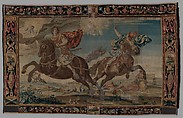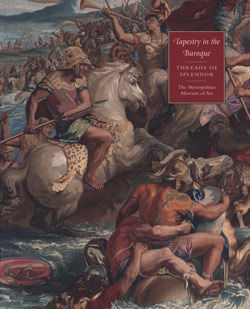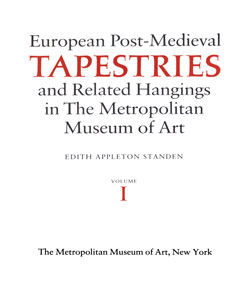The Destruction of the Children of Niobe from a set of "The Horses"
Designer Frans Cleyn German
Probably made at Mortlake Tapestry Manufactory British
Patron Henry Mordaunt
Image overtakes narrative in this tapestry, which depicts a story about mortals punished for defying the gods; mythology, however, is just a pretext for the dramatically careening horses. In 1619, an entrepreneurial courtier of King James I used royal backing to establish the Mortlake Tapestry Manufactory- where this tapestry was probably made- luring talented refugee weavers from Flanders. This large-scale and ambitious endeavor predated by decades the comparable French royal initiative, Louis XIV's Manufacture Royale des Gobelins. In 1625, under King Charles I, the German, Frans Cleyn was appointed Mortlake's principal designer, creating- amongst others- cartoons for the series of which this tapestry and another in The Met collection (37.85) is part. Called "The Horses", it was woven many times between the mid-1630s and the late seventeenth century, when this tapestry was woven and acquired by the Earl of Peterborough, who customized it with the added inclusion of his coat of arms. By then, Mortlake production was considered by many to be stodgy and dated compared to the brighter, edgier designs coming out of competing workshops in London.
#402. The Mortlake Tapestry Works
Due to rights restrictions, this image cannot be enlarged, viewed at full screen, or downloaded.
This artwork is meant to be viewed from right to left. Scroll left to view more.





